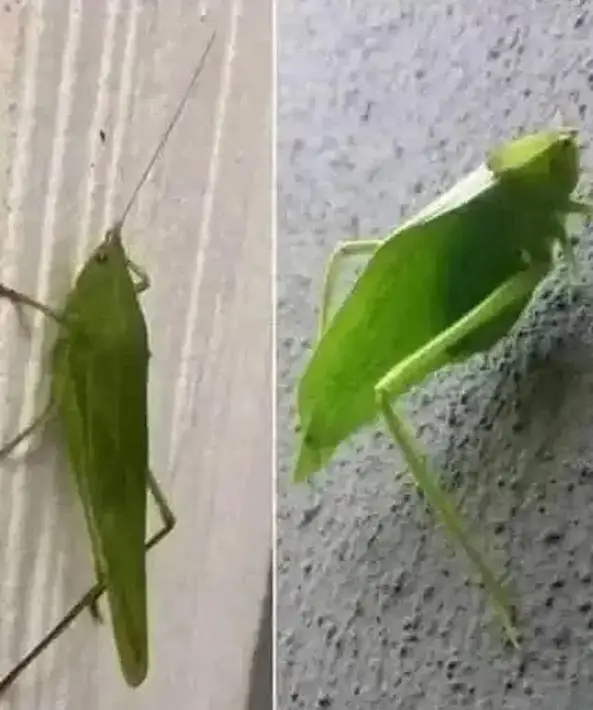
Most of us barely notice insects, especially when they show up indoors. We swat them away, open a window, or call pest control, treating them as mere nuisances. But what if that tiny visitor isn’t just a random bug? What if it’s nature’s way of knocking on your door?
The leafhopper—a small, delicate insect that blends so perfectly with leaves it’s almost invisible—is more than just a master of disguise. Its presence might be a subtle reminder from the natural world, signaling something larger happening outside your home.
What Is a Leafhopper, and Why Is It Unique?
Leafhoppers are small green insects that mimic leaves to evade predators. This camouflage isn’t just clever—it’s vital for their survival and plays an important role in the ecosystem. Despite their size, leafhoppers contribute significantly by:
Helping regulate plant growth through their feeding habits
Serving as a food source for birds, spiders, frogs, and other beneficial predators
Maintaining a delicate balance in nature’s food web
When you spot a leafhopper, you’re glimpsing an active participant in Earth’s complex ecological system.
A Sign of Ecosystem Health
Seeing a leafhopper inside your home might feel odd, but it could be nature’s way of sending a message about the environment. Insects like leafhoppers are bioindicators—meaning their presence and behavior reveal insights about ecosystem health.
Unusual indoor appearances may hint at:
Shifts in weather or climate patterns
Loss of natural habitats due to urban development
Disruptions in the local food chain
Use of pesticides or chemicals nearby
As we alter the environment, nature often adjusts in ways that bring these changes right to our doorstep.
The Leafhopper’s Role in the Ecosystem
Think of the leafhopper as a tiny gardener. By feeding on plant sap, it helps control the growth of plants, preventing any one species from overtaking others. This balance promotes biodiversity, allowing a variety of plants to thrive.
Moreover, leafhoppers sustain many predators by serving as a food source. Without them, birds, frogs, spiders, and other insects would struggle to survive, throwing off the balance of the local food chain.
In essence, leafhoppers help keep ecosystems humming smoothly.
Insects as Messengers, Not Just Pests
It’s easy to see insects as mere pests, but repeated appearances—especially indoors—can signal broader environmental shifts. Increased sightings of leafhoppers might reflect:
Warmer temperatures or changing weather conditions
Habitat disruption from new construction or land use changes
Declines in natural predators like birds or frogs
Nearby pesticide use affecting their natural living spaces
Before grabbing a broom or spray, consider what these small visitors might be telling you about your environment.
What Can You Do to Help?
You don’t need a science degree to support a healthier ecosystem. Simple actions around your home can make a big difference:
Create insect-friendly outdoor spaces
Plant native flowers and shrubs, avoid chemical pesticides, and let parts of your yard grow naturally.
Use natural cleaning products indoors
Harsh chemicals can harm beneficial insects. Opt for gentle, eco-friendly alternatives.
Educate and involve the next generation
Teach children to appreciate the role of every creature—even the tiny ones—in our shared environment.
Support conservation efforts
Volunteer, donate, or raise awareness for local initiatives that protect biodiversity and green spaces.
A Teachable Moment Hidden in Wings
Nature often tries to connect with us in subtle ways. A leafhopper crawling across your windowsill is more than just a random insect—it’s an invitation to pause, reflect, and appreciate the interconnectedness of life.
It reminds us that insects are not nuisances but essential builders and messengers in the Earth’s delicate balance.
What Will You Do When Nature Knocks?
The next time you see a leafhopper—or any small insect—inside your home, resist the urge to immediately remove it. Instead, ask yourself:
What might this tiny visitor be trying to communicate?
What does its presence say about the world outside my home?
How can I be more mindful and proactive in protecting the environment?
Small choices at home—from switching to safer products to planting pollinator-friendly gardens—can ripple outward and contribute to a healthier planet.
In the grand mosaic of nature, even the smallest creatures play a vital role.
And so do we.




